My question is different from the question referred to by Jon P in this question question pointed to by Jon P and flagged above as being a question that has already been asked. That question was to display an entire gradient of temperatures. This question is to attach a single hue to a single temperature.
I need to display a single numeric temperature value in a color that maps the temperature to a certain hue in a range of hues on an hsl wheel. I need upper temperatures to show as very red (330 on the hsl wheel) and lower temperatures as very blue (270 on the hsl wheel).
After a bit of work at the suggest of Scott Sauyet in comment below, I solved my problem and it is posted below.
